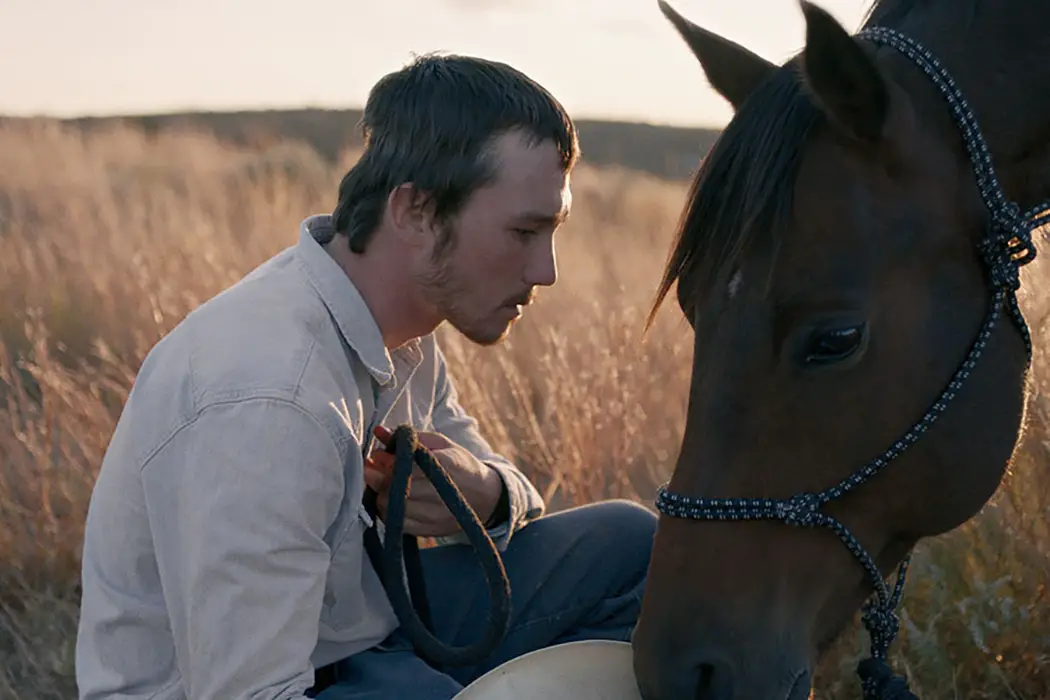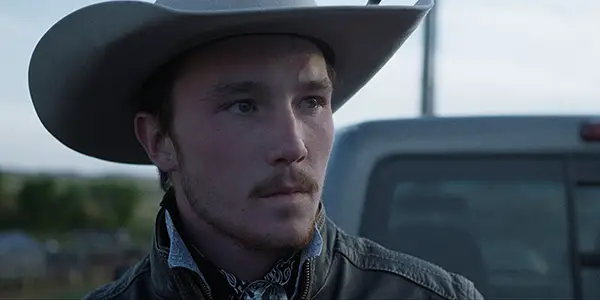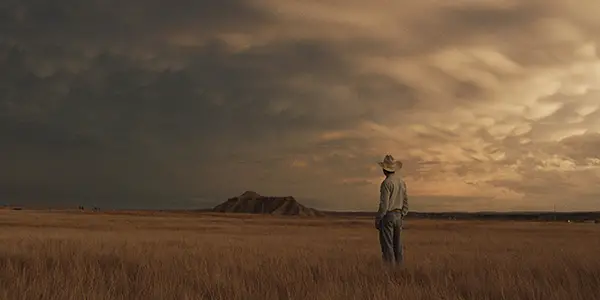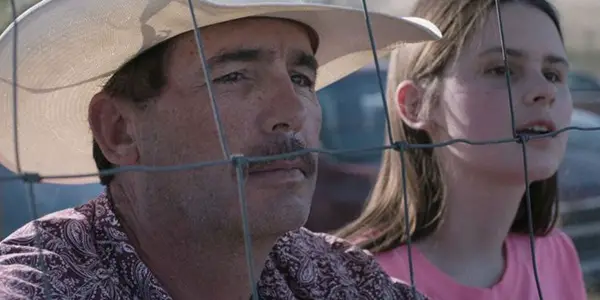THE RIDER: A Solemn, Moving & Elegiac Portrait

David is a film aficionado from Colchester, Connecticut. He enjoys…
It’s often said that great films have the ability to transport you to a certain time and place. But even more than that, they have the ability to transport you into a specific mind and perspective, however unfamiliar that might be from your typical daily life. Rarely is that more prevelant than in Chloé Zao‘s The Rider.
Based on the experiences of Brady Jandreau (who plays himself in the film), the film not only operates as a powerful character study, but it simultaneously shines light on small-town communities of the American Midwest, where rodeos are as natural a need as food and water. Much as with her past film Songs My Brothers Taught Me, which gazed at the communities within a Native American reservation, Zao‘s sensible approach to the film pulsates with sincerity, and it shows in every frame.
The Rise and Fall of a Hero
In the American Midwest, Brady Blackburn (Brady Jandreau) is as good a cowboy as they come, admired by his friends and community alike for his riding abilities. When we see him at the start of The Rider, however, he has recently suffered a serious head injury, which puts him out of commission for the foreseeable future. Clearly amiss without the continued thrill of the sport, Brady nonetheless attempts to get his life back on track, taking care of his Autistic sister Lilly (Lilly Jandreau) and regularly visiting his friend Lane Scott (Lane Scott) in the hospital, who is partially disabled after his own rodeo injury.
Despite the warnings of his doctor, Brady hopes to eventually make a comeback in the sport. He trains horses in his free time, eventually buying one named Apollo in the hopes of being able to ride him into the ring one day. Yet, it’s soon evident, not only from subsequent doctor visits but with multiple symptoms still showing their face, that Brady may never get his chance in the limelight again.

The Rider is a film that easily could be seen as disengaging to people who are usually off-put by this type of story. With a relatively limited plot, it is actually quite uneventful overall. Yet, it is far from listless, feeling quite fluid and evenly-paced throughout. Chloé Zao, along with editor Alex O’Flinn, weaves together a story using small snippets of Brady’s daily life, bringing us through the motions of his day, yet with just enough momentum to keep it enthralling, never lingering too long on one particular moment but instead slowly pulling us into his world.
Though mostly quiet and reserved, Brady Blackburn is an inherently likable person, seen in how he takes care of his sister, visits his friend in the hospital, and especially when we see him training horses, a task that he was clearly born to do. In one exchange, we can see the true depth of his ability, as we see him soothe a wild and bucking horse into one that he can ride with ease.
Brady himself, who Zao personally selected due not only to his backstory but also his ability to train with horses, is a remarkably strong presence despite never acting before. Due almost definitely to the fact that the story being told is his own, Brady brings a haunted quality to his onscreen persona, seen in in the film’s many use of closeups, which show just how much angst he is holding within. The overall use of non-actors, though with occasionally awkward exchanges, is undeniably the only way this story could have been told.
The Modern Western
The Rider is actually Zao‘s second Western, preceded by 2015’s equally beautiful Songs My Brothers Taught Me. Both films encapsulate a vision of the old West in the modern day, seen in the tight-knit Native American communities of Songs and the small-town prairies of The Rider.

Zao, along with Director of Photography Joshua James Richards, really has a flair for utilizing the best natural light of the surrounding landscape. Set amongst the prairies of South Dakota, The Rider has numerous moments of lyrical beauty, including classic Western images such as Brady framed on his horse in the sunset. There is one particular exchange where Brady simply wanders out into the lonesome wild during twilight, observing and breathing in the quiet all around him, accompanied by soothing ambient sounds from Nathan Halpern‘s relatively limited score. It’s a poignantly heart-stopping moment of beauty, when Brady finally seems calm despite the growing turmoil in his surrounding life.
Overt Masculinity
Brady’s struggles throughout The Rider are at least partly due to his ideals of what it means to be a man. Seen in his many conflicts with his father Tim (Tim Jandreau), which hint at his upbringing, Brady was taught from a young age how masculinity is meant to define you. As such, even with his serious head injury, he is determined not to allow it to turn him away from riding.

What Zao does with these sentiments, though, are what make The Rider all the more effective (and all the more tragic). While capturing the masculinity inherent within the Western genre, she then subverts it in unexpected ways, showing how someone can learn to outgrow and overcome these outdated ideals even if they continue to be reinforced around them. There’s one particular line towards the conclusion of the film that hammers this home, in which Brady is talking to his friend Lane in the hospital, who tells him to “Never give up on your dreams.” As The Rider suggests, though, perhaps it’s our dreams themselves that need to be occasionally reexamined.
Conclusion: The Rider
With The Rider, director Chloé Zao reinforces that she is amongst the more promising voices in the indie world working today. With now two Westerns under her belt (and another on the way, about the first black U.S. Deputy Marshall), it’s evident that the Chinese director has a feel for the genre more than a majority of Americans.
With her delicate approach, inspired Western-influenced imagery, and hard-hitting subversive themes, it’s clear that Zao is not going anywhere anytime soon.
What are your thoughts on The Rider? Are you a fan of films that almost exclusively feature non-actors? Tell us your thoughts in the comments below!
The Rider was released in the U.S. on April 13, 2018 and will be released in the UK on September 21, 2018. For all international release dates, click here.
Does content like this matter to you?
Become a Member and support film journalism. Unlock access to all of Film Inquiry`s great articles. Join a community of like-minded readers who are passionate about cinema - get access to our private members Network, give back to independent filmmakers, and more.
David is a film aficionado from Colchester, Connecticut. He enjoys writing, reading, analyzing, and of course, watching movies. His favorite genres are westerns, crime dramas, horror, and sci-fis. He also enjoys binge-watching TV shows on Netflix.













